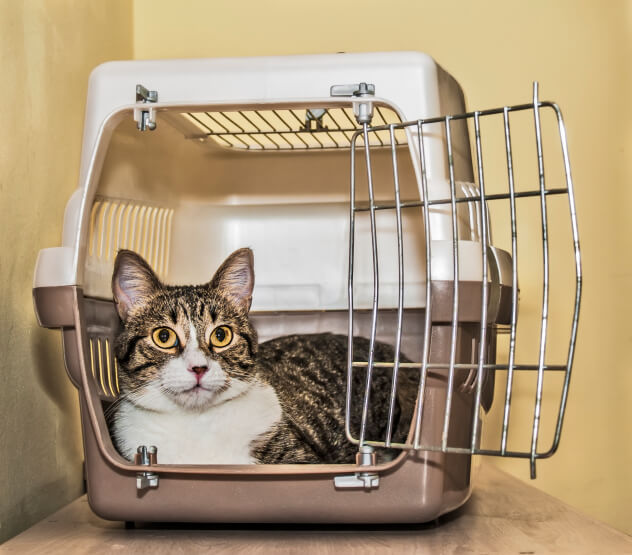
4 Tricks to Safely Moving with Pets
While moving to a new home can be a stressful experience for any adult, it’s often even more difficult for pets – especially when the home you’re leaving is the only one they’ve ever known. By employing these four tricks for safely moving with pets, you can make your upcoming move a less stressful experience for everyone in your family.
Plan transportation
When moving with dogs or cats, driving is typically the safest mode of transportation. If your drive will take longer than a single day, be sure to look for lodging along your route that accepts furry guests. Remember, not all online booking sites may be privy to recent policy changes, so it’s always best to contact the hotel directly by phone to confirm your pets are welcome.
When flying is the only transportation available, bear in mind that not all airlines allow for the transport of dogs and cats. As with the hotels, call the airlines directly to confirm their pet policy. Also, when traveling with smaller pets, some airlines will allow you to bring them into the cabin, so be sure to ask if that will be possible on your flight. If your pet will be in the cabin, you’ll need a travel bag that fits under the seat, for baggage travel, a crate; check with the airline for the regulation sizes and purchase the carrier well in advance of your trip.
See the vet
Many airlines require you to show a health certificate from a veterinarian, stating that your pet is well enough for travel and up to date on shots. If you’re moving far from your current home, ask the vet if there are new shots or medications your pet needs for protection in the new environment.
Your vet can be a wealth of information about how to safely move with pets. If you have a dog or cat that’s particularly high strung, you may wish to discuss anxiety medication to help them successfully make the transition into their new surroundings. In more severe cases, or for longer trips, you may find it helpful to sedate your pet during transport.
Since moving days are known for being blurs of activity, be sure to keep a log of how often you give sedatives to your pet. Something as simple as recording the times on your smartphone or texting a family member every time you give Fido a sedative could help you avoid overmedicating your pet.
Secure your new home
Your work isn’t quite done once you get to your new home. If at all possible, walk your property one last time before bringing your pets over to ensure there are no wires, nails or other hazards that could harm pets or breaks in the fence. When you must bring your pet with you right away, find a utility room or bathroom where they can stay safe while you inspect the area.
Make it a home
One of the best ways to help keep your pet calm after the move is to settle them into their new routine right from the start. Be sure you know exactly where to find litter boxes, food bowls, toys and pet beds so that you can set them up right away. Since your pets may be more anxious in the days after your move, consider taking regular breaks from unpacking to play with them or take them for walks. Even just a quick head pat or hug between boxes can go a long way toward restoring your pet’s mental health.